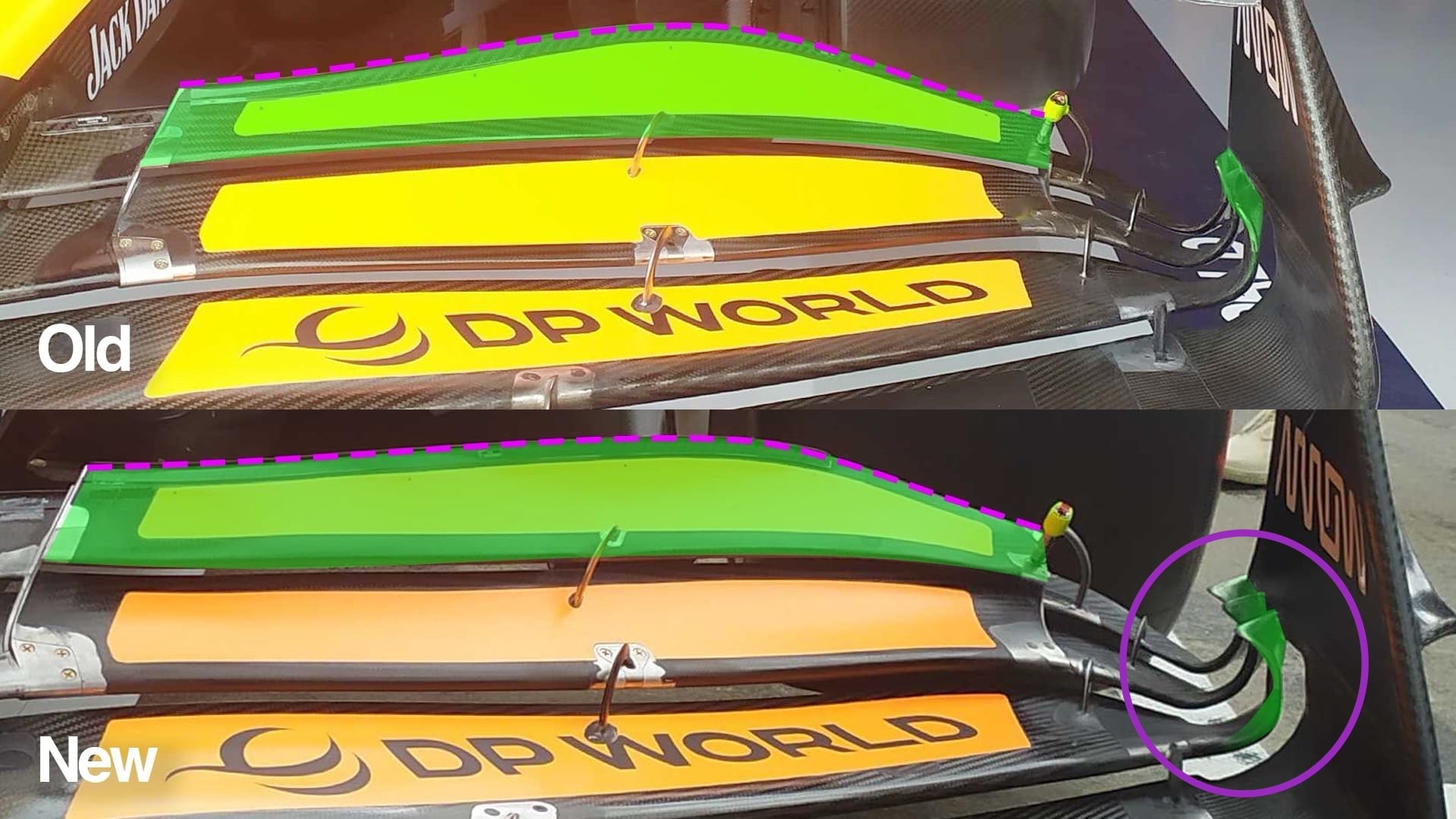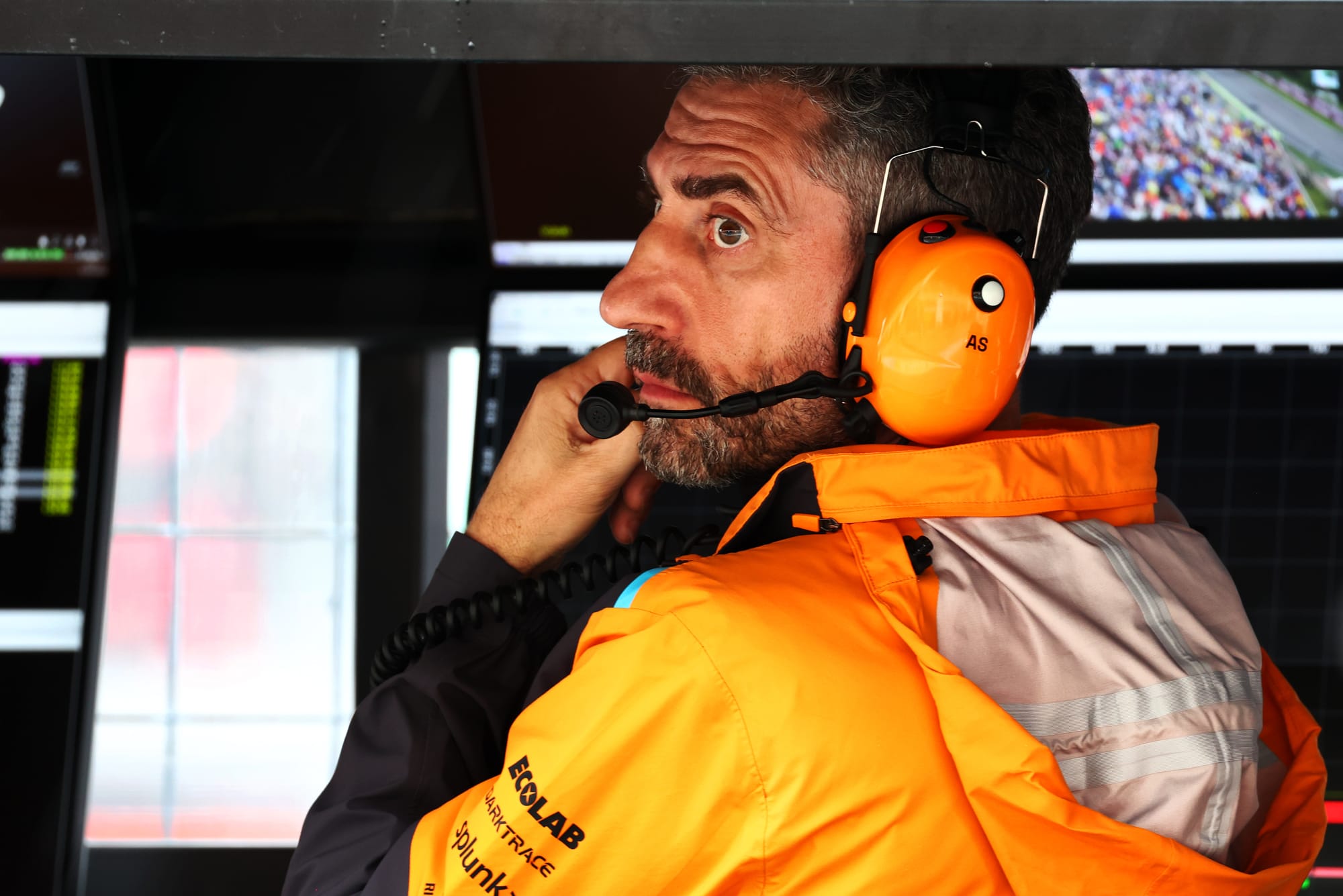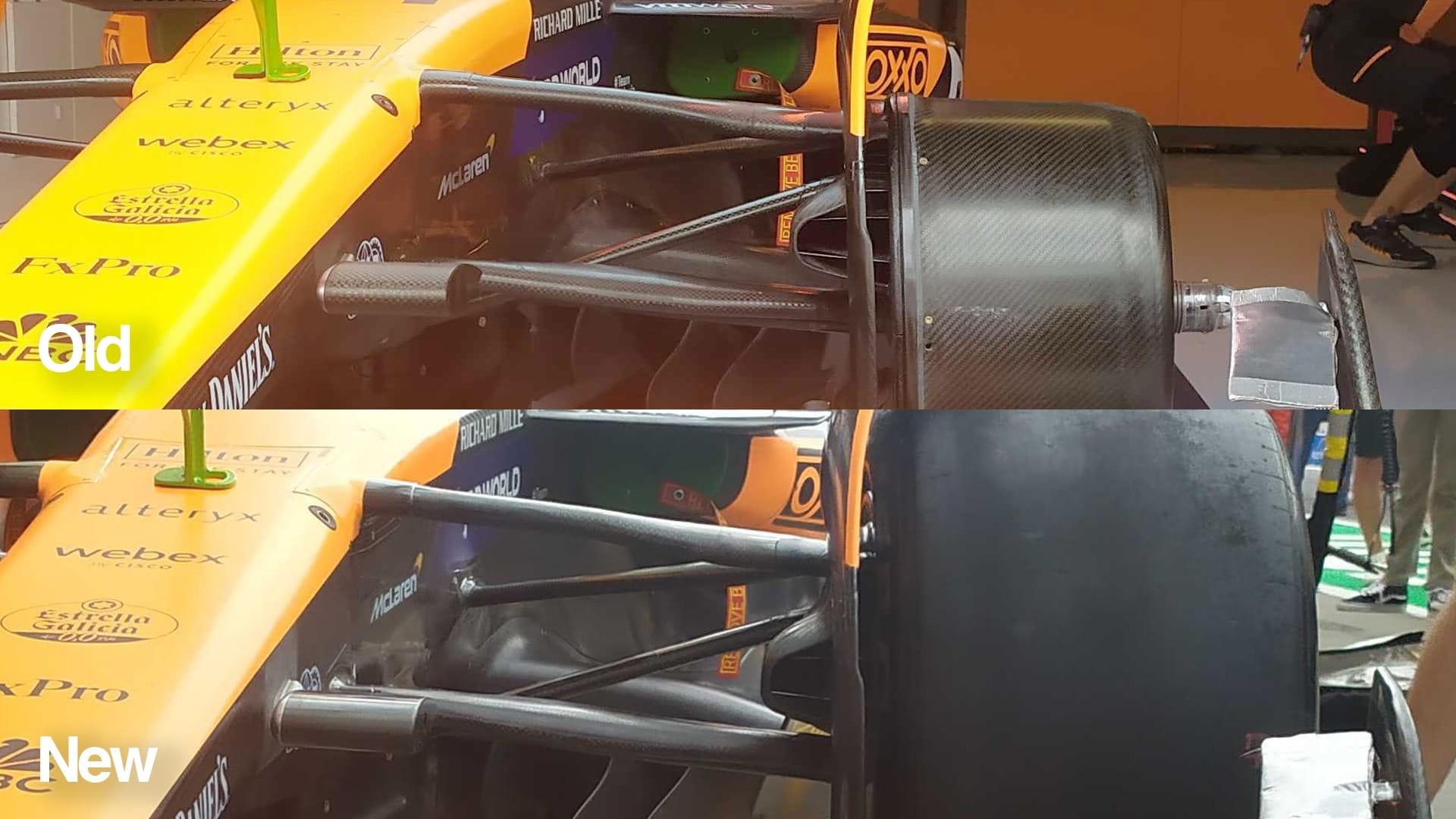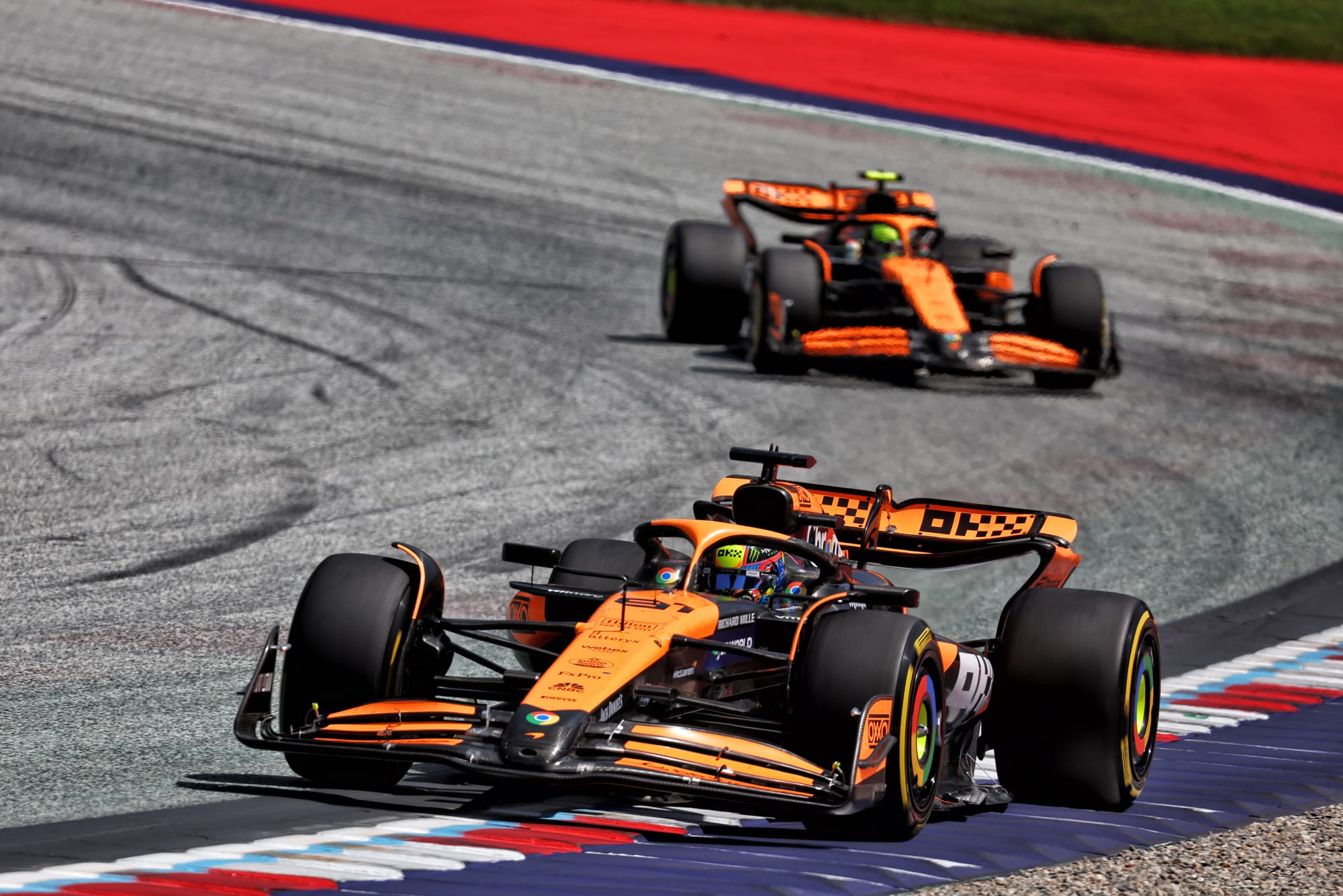McLaren's development trend over the past 18 months has been impressive, with the latest small but significant item being the introduction of a new front wing in Austria which Lando Norris almost used to take the team's second Formula 1 win of the season.
Developing any racing car is difficult, but F1 ground effect cars are doubly difficult because you need different characteristics between low-speed and high-speed cornering, which can mean a conflicting development path.
This is partly because the FIA restricts how much a team can change its weight distribution. This was introduced as a result of Pirelli wanting to reduce the risk of any team overloading either the front or rear tyres, a rule that has been in place since the start of 2011.
This is controlled at around 1.5%, so no team has the opportunity to change the weight distribution to improve front grip at low speeds and/or rear grip at high speeds – so in reality it all has to be done aerodynamically.
The natural tendency of these cars is to drift off the track in low and medium speed corners. This turns into drifting off the track in high speed corners. The degree to which this drift occurs is what gives one team, and even the driver, an advantage over the other.
McLaren has impressed me because it seems to be one of the few teams that actually understands this requirement and, more importantly, is introducing developments to the car that improve its overall performance in both low and high speed corners.
So what changes can be made between low and high speed corners that would leave room for changing characteristics?
First, there are the front and rear ride heights. These heights decrease with speed in a ratio of about 2:1 front to rear. As the aerodynamic load increases, the steering angle also increases secondarily, which increases during low-speed cornering.
With this in mind, it is important to maximize overall downforce, especially front-end at high ride heights and high steering angles, using underfloor and profile splitters to move the aerodynamic center of pressure rearward at a speed that will stabilize the rear of the car in high-speed corners.
As I always say, the airflow coming off the trailing edge of the front wing is what the rest of the car has to work with. That means it’s the first thing you need to improve, and the more consistent and consistent that flow is, the better your understanding of how to develop the underfloor.
As an example of what I call the “blind development trend,” we’ve heard Ferrari drivers at the Red Bull Ring complain about the car bouncing back. This happens when the losses from the airflow separation under the floor are greater than the increase in downforce at high speeds.
If you get into that situation, the car becomes unstable and starts to bounce. I'm sure Ferrari have improved the downforce numbers, but not in a direction that the driver can use.
As a second example, Mercedes started the season with a unique front wing design that everyone said the rest of the teams would copy. Now that design is in the bin, both drivers claim that the new design of the traditional front wing has given the car a new lease of life.
The car still has some way to go in this area, but it will be easier to understand the car overall with this wing concept, so Mercedes is on its way to being more consistent in terms of performance.
My colleague at The Race, Mark Hughes, asked McLaren team principal Andrea Stella about the conflict between the front wing's behaviour in low and high speed corners when the new front wing first appeared.
“Especially with this generation of cars and this generation of front wing regulations, the geometry is very restrictive,” said Stella. “So it’s difficult to achieve what you want at low speed, or at high steering angles, or what you want in a straight line, or what we want at high speed.
“This is a challenge that I’m sure all the teams face, and that’s also why it’s been so difficult to bring development to the front wing. Hopefully the compromise we’re working on will be able to offer some benefits at low speeds, but without affecting high speed or the straight line. [speed] “Very negative.”

In the comparison above, we can see the slight change in the trailing edge of the back cover (purple dotted line). This improves the consistency of the flow coming from the trailing edge of this cover.
But the main change is the detail inside the purple ellipse. This is the area that changes as steering lock increases. Anything you can do to tie this area into the flow that runs around the outside of the front tire contact patch means the front wing will work more efficiently at higher ride heights and increased steering lock.
In addition to the front wing change, there were also changes to the aerodynamic covers surrounding the front suspension, although the geometry remained unchanged.

“It's just shrouds.” [that change] “Because changing the front wing slightly changes the airflow to the rear of the car,” Stella said. “You need to improve the components downstream of the airflow for the slight difference in the terrain.
“This is very normal. I think I see more and more teams when you upgrade the front wing, they always upgrade the brake ducts and the suspension covers. This is purely aerodynamic.”

As Stella said, the changes in this area are very subtle but need to be made to improve airflow to the leading edge of the underfloor. The floor itself has its own specific requirements, but it would be easier to improve if airflow to this area was more consistent through ride height and steering lock range.
As Stella explained, the cycle of improvement always continues in this way.
“The floor and fence respond to the incoming flow, but they also have their own justification for major changes,” he added.

“The suspension is a largely passive component that responds primarily to the front wing. If you develop a component like the floor, there’s a lot going on under the floor, which takes on its own development direction.”
It's impressive how well McLaren have caught up with Red Bull, and I really think they have caught up with Red Bull in terms of performance.
Yes, for Red Bull it is difficult to make gains and stay at the top of the tree if they are already there, but with the regulations remaining fairly stable for 2025, I am sure that McLaren with their drivers can finish 2024 strongly and mount a real challenge for the championship for 2025.





